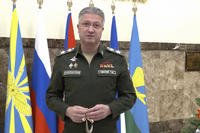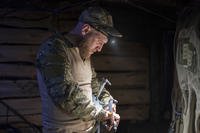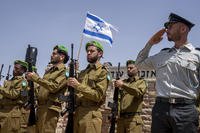The folks over at Small Wars Journal have posted a draft version of the Army Capstone Concept, courtesy of Brig. Gen. H.R. McMaster. The document is supposed to be finished by December. McMaster wants comments on the document.
The ACC is an effort to place “modernization decisions in a broader context of future armed conflict.” It is an attempt to capture the reality of future war and drops many of the, quite frankly, unrealistic ideas found in the 2005 version. That dose of reality is important, as it says in the foreword written by Training and Doctrine commander Gen. Martin Dempsey, because: “ideas matter.”
The 2005 version of the concept was based on the idea that technology would provide near perfect knowledge, “situational awareness,” of the enemy, and introduce an element of predictability into combat. Getting rid of those mistaken assumptions is a major aim of the new document that proposes new assumptions, “built around complexity and uncertainty.” It quotes from Clausewitz: “In war everything is uncertain and variable.”
Therefore, future Army leaders, must be “comfortable with uncertainty, who are skilled critical thinkers, and who know the importance of learning organizations able to adapt to change.” Further, soldiers must be able to continue fighting when they lose command and control networks due to enemy action or radio frequency degradation.
The 2005 document failed to include much on irregular warfare, another major shortcoming the new effort seeks to redress. It embraces the ideas articulated by retired British Gen. Rupert Smith, and others, that future wars will take place among the people. There are no longer just two players on the battlefield, the document says: “War is a three-person, not a two-person game. This paradigm must be the basis of all education, training and organization.”
The 2005 capstone document was filled with references to “vertical mounted maneuver,” the idea that lightweight FCS armored vehicles would be lifted about the battlefield by giant tilt-rotor aircraft. Always a rather fantastical notion, the new draft document acknowledges that defense budget realities, if not other realities, mean that vision is unlikely to be realized anytime soon.
Decentralization is a key theme in the draft, reflecting the thinking taking place in other parts of the military, such as efforts led by Gen. James Mattis at Joint Forces Command. It says enemies will seek cover in cities, and will only expose themselves to U.S. surveillance and firepower for fleeting moments. The authority to make weighty decisions and employ the full panoply of joint weapons must be made available to small unit commanders engaged in those back alley fights.
“Developing the situation” and finding the enemy will demand close combat (a return of movement to contact), particularly when that enemy is hidden in urban areas or amongst the people; a clear repudiation by McMaster and company of once popular “revolution in military affairs” concepts that said knowledge of the enemy could be gained by overhead surveillance alone and then the enemy could be dispatched by stand-off fires. That was wishful thinking.
“Defeating hybrid threats requires fighting,” it says, in a nod to those who claim the Army is losing its ability to fight because it’s been serving as a constabulary force in counterinsurgency wars for the past eight years. The document proposes a “fighting-centric approach” to defeating enemies, in small wars and big: “This spirit of the offensive applies to offensive, defensive, and stability operations in a wide variety of operating environments.”
The draft document acknowledges the proliferation of “anti-access” weaponry, such as advanced air-defenses and anti-ship missiles, and says the Army must be prepared to fight its way in to contested landing zones. Early entry forces must defend landing zones from enemy attacks to allow a buildup of combat power. Those units must be robust enough to survive enemy attacks yet not so big as to tax the air-bridge that sustains them.
The Army has been wrestling with that issue ever since the 82nd Airborne as “speed bump” days during the first Gulf war; it was part of what the service was trying to address with FCS, that is, provide early arriving light fighters with more lethality and protection. This draft document would seem to lean in the direction of some type of an air-transportable, forcible entry armored vehicle for the Army’s future Ground Combat Vehicle effort that we've written quite a bit about.
The section on “required capabilities” lays out a laundry list of needs, some specific, such as a “single, integrated network” and the ability train in more “realistic” scenarios. Others are much more general, such as “the capability to employ the manpower, mobility, firepower, and protection necessary to close with the enemy.”








